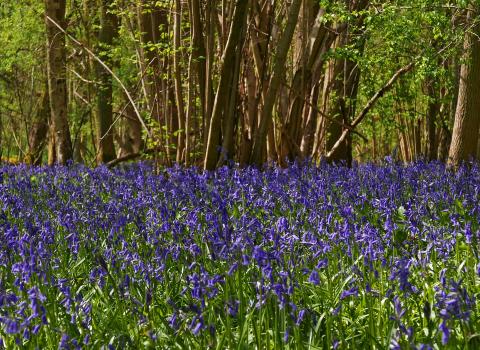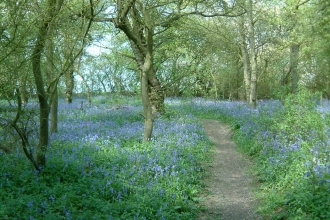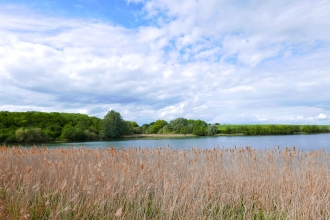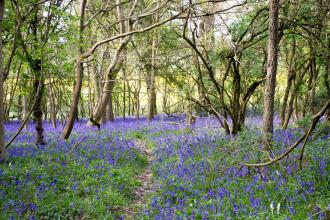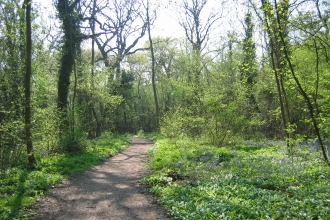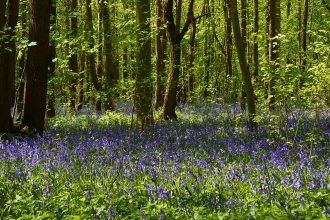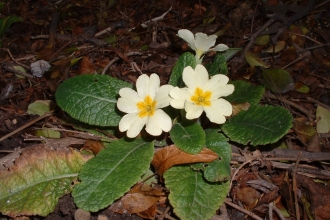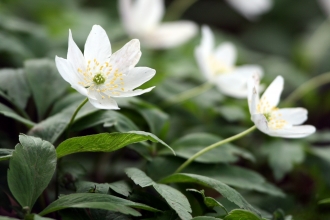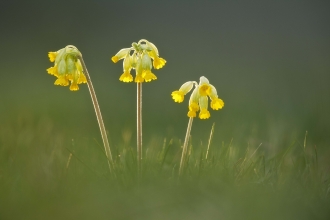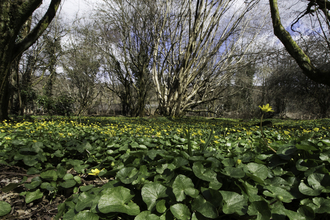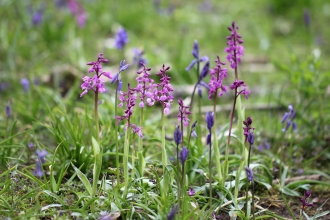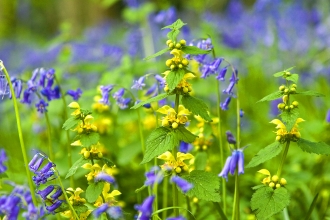Britain's favourite wildflower
Carpets of native English bluebells in ancient woodlands are a very special and very British wildlife spectacle. While they grow in other parts of Western Europe bluebells reach their highest densities in Britain and Ireland. It is estimated that 25% - 50% of all common bluebells can be found in the British Isles. Bluebells are a key indicator species for ancient woodlands, which means bluebell woods are likely to date back to at least 1600 and may be much much older.
Some of the best bluebell woodlands can be found in our region, and are managed by the Wildlife Trust for Bedfordshire, Cambridgeshire and Northamptonshire. We are able to manage these brilliant habitats thanks to the support of our members.
Joining the Wildlife Trust for Beds Cambs and Northants is the best way to protect nature near you. Find out more about our membership benefits and join us today!
Help protect wildflowers like bluebells by becoming a Wildlife Trust member
Amazing bluebells - find out more
The bluebell is probably one of Britain’s best known wildflowers. No-one can fail to marvel at the beautiful sight of a spring woodland carpeted in blue. We enjoy their wild beauty and their sweet scent, as well as the hum of emerging insects which rely on them as a source of food. Bluebells are an important early food flower for bees, hoverflies and butterflies which feed on nectar.
Read some of the facts about bluebells, below, or download our bluebell factsheet.
Scientific name and meaning
The bluebell's scientific name (Hyacinthoides non-scripta) comes from a Greek myth. When the Prince Hyacinthus died, the God Apollo's tears spelled the word 'alas' on the petals of the hyacinth flower that sprang up from his blood. Non-scripta means unlettered and tells readers that the bluebell is a different species to the similar looking hyacinth.
Bluebells in the UK and in East Anglia
Bluebells are a protected species and the Trust works to conserve their habitats in our three counties. Indeed the carpets that we are accustomed to are usually a reasonable indicator of an ancient woodland. 25-49% of the world’s population of bluebells are found in the UK.
In East Anglia these seasonal wonders are not as common as elsewhere, because there simply aren’t as many suitable areas of woodland or heathland for bluebells to thrive. 71% of native bluebells are found in broadleaved woodland or scrub.
Bluebells bulbs prefer to be in shade during the summer and in areas where it is not too wet, so the wide open spaces and boggy Fens in this region are not suitable. That said, in the special woodland spots where we do find them, they are just as spectacular as anywhere else.
Threats
Theft and habitat loss: The biggest threats to bluebells are habitat loss and uprooting of the bulbs for gardens.
Growth rate: Bluebells are slow to develop and it takes at least five years for a seed to grow into a bulb.
Grazing: Sheep and cattle can cause considerable harm by grazing on bluebell leaves. Similarly the introduction of the muntjac deer is causing many problems as these animals are partial to the bluebell leaves and can cause great damage by eating them to the ground and by crushing them.
Native bluebell or Spanish bluebell - telling them apart
Unfortunately native bluebells are under threat from a non-native imposter, the Spanish bluebell - the plants are very similar, although the Spanish version is usually paler than our native species and has upright flowers all around the stem. These give it a more upright appearance than English bluebells, which have flowers arranged on one side of the stem, giving them a characteristic droop. Native bluebells have white-creamy anthers inside, whereas non-native anthers are usually blue. But just to confuse things they can also hybridise.
Spanish bluebells are widely sold in garden centres and have escaped from home gardens into the wild. While you might argue that there can surely be little harm in having a few from elsewhere, especially as they look similar, the Spanish and native species are inter-breediing which results in hybrid plants that could eventually lead to the extinction of 'our' bluebell. You can read more about current research into this problem in our news story on bluebells and barcoding.
Bluebells can also be white. These rare individuals lack the pigment that gives bluebells their distinctive colour.
Bluebells in folklore
In folklore, bluebells are also known as ‘fairy flowers’. It was believed that fairies used bluebells to trap passersby particularly small children!
Other folklore tales would have us believe that by wearing a wreath made of bluebell flowers, the wearer would be compelled to speak only the truth. Or that if you could turn one of the flowers inside out without tearing it, you would eventually win the one you love.
Bluebell uses
Bluebell plants are poisonous. The chemical that makes them poisonous was used in alchemy and is being researched by modern day scientists for medical use.
Tennyson speaks of bluebell juice being used to cure snake-bite. The romantic poets of the 19th century, such as Keats and Tennyson, believed that the bluebell symbolised solitude and regret.
The bulbs produce an extremely sticky substance which as once used to stick the pages in books and the feathers on arrows.
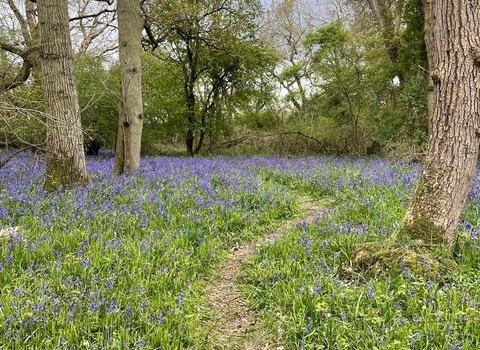
Important - stay on the main paths and help us protect our bluebells!
Bluebells are easily damaged and will not flower if they have been crushed.
Once harmed it can take years for the plants to recover. To conserve these beautiful flowers, please stay on the main paths when walking through bluebell woods. Remember that paths can be muddy with spring rains, so wellies or sturdy walking boots may be the best footwear. It is illegal to disturb bluebells.
This 'path' in Lady's Wood was entirely created by people trampling on the bluebells and damaging the plants.
Where to see bluebells
Please note that to protect our sites we may be restricting access this spring. Please check our Know before you go or the reserve pages before you visit.

